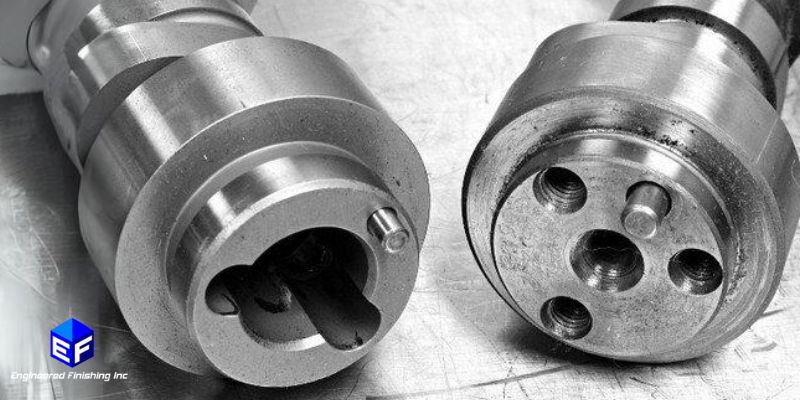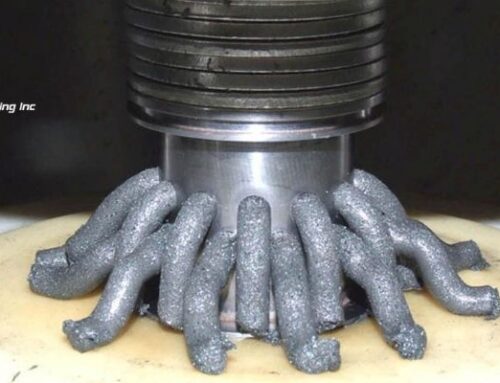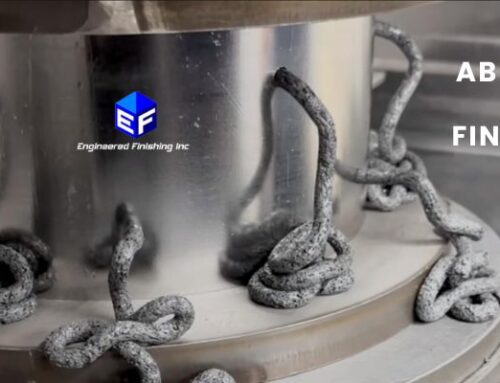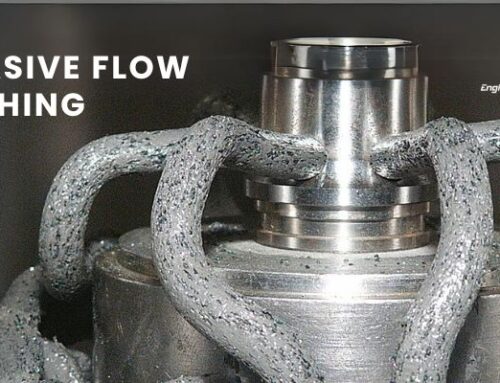Have you ever known about the manufacturing units and how they achieve precise surface finishes and intricate geometries is often paramount? One method that has emerged as a reliable solution is Abrasive Flow Finishing (AFF). This innovative process offers a unique approach to surface refinement and edge enhancement, making it a preferred choice in various industries. In this blog, we delve into the principles, parameters, and capabilities of Abrasive Flow Finishing, shedding light on its transformative potential.
Process Principle:
At its core, Abrasive Flow Finishing is a form of abrasive machining that utilizes a viscoelastic medium carrying abrasive particles to remove material from workpiece surfaces. The process involves forcing this abrasive-laden medium through the workpiece’s internal passages and intricate contours, effectively polishing and refining the surfaces it encounters.
The key principle behind AFF lies in the controlled flow of the abrasive medium, which conforms to the shape of the workpiece, ensuring uniform material removal. This adaptability allows AFF to address complex geometries and internal features that conventional machining methods struggle to reach.
Parameters:
Several parameters govern the effectiveness and efficiency of Abrasive Flow Finishing:
- Viscosity of the Abrasive Medium: The viscosity of the medium dictates its flow characteristics and the extent of material removal. Controlling viscosity enables operators to tailor the process to specific workpiece materials and surface requirements.
- Pressure: The pressure applied to the abrasive medium determines the force exerted on the workpiece surfaces. Adjusting pressure allows for precise control over material removal rates and surface finishing quality.
- Abrasive Particle Size and Concentration: The size and concentration of abrasive particles influence the aggressiveness of material removal and the resulting surface finish. Fine particles yield smoother finishes, while higher concentrations enhance material removal rates.
- Temperature: Temperature plays a crucial role in AFF, affecting both the viscosity of the abrasive medium and the material’s response to abrasive action. Monitoring and controlling temperature ensure consistent process performance and prevent thermal damage to workpieces.
Capabilities:
- Abrasive Flow Finishing: offers a myriad of capabilities that make it an indispensable tool in modern manufacturing:
- Superior Surface Finishing: AFF excels in achieving exceptionally smooth surface finishes, surpassing the capabilities of traditional machining methods. It effectively removes surface irregularities, scratches, and burrs, resulting in parts with pristine surfaces ready for use or subsequent finishing processes.
- Deburring and Edge Radiusing: The controlled flow of abrasive medium in AFF enables precise deburring and edge radiusing, even in intricate geometries and internal passages. This capability enhances part functionality, aesthetics, and safety by eliminating sharp edges and burrs.
- Consistent Internal Finishing: AFF is particularly adept at finishing internal surfaces of complex components, such as aerospace engine components, hydraulic valves, and medical implants. It ensures uniform surface quality and precise dimensional control throughout the internal passages, enhancing performance and longevity.
- Process Flexibility: Abrasive Flow Finishing can be tailored to accommodate a wide range of materials, including metals, ceramics, composites, and even polymers. Its adaptability makes it suitable for diverse applications across industries, from automotive and aerospace to medical and tooling.
Understanding Some More Factors:
- Material Compatibility: Abrasive Flow Finishing is compatible with a wide range of materials, including ferrous and non-ferrous metals, ceramics, plastics, and even advanced composite materials. This versatility makes it an attractive option for manufacturers working with diverse material requirements.
- Reduced Tooling Costs: Unlike traditional machining methods that often require custom tooling for intricate geometries, AFF offers a cost-effective alternative. Its ability to conform to complex shapes eliminates the need for specialized tooling, reducing tooling costs and lead times for production.
- Controlled Material Removal: One of the key advantages of Abrasive Flow Finishing is its ability to precisely control material removal rates. By adjusting process parameters such as pressure, viscosity, and abrasive concentration, operators can achieve targeted material removal while minimizing the risk of overcutting or surface damage.
- Post-Processing Versatility: AFF can be seamlessly integrated into multi-step manufacturing processes or used as a standalone finishing operation. Its compatibility with various surface coatings and treatments allows manufacturers to achieve desired surface properties and functionalities, such as corrosion resistance, friction reduction, or aesthetic enhancements.
- Environmental Friendliness: Compared to traditional machining methods that generate significant amounts of waste material and consume large quantities of coolant and lubricants, Abrasive Flow Finishing offers a more environmentally friendly solution. The use of recyclable abrasive media and minimal coolant requirements contribute to reduced waste generation and lower environmental impact.
- Process Monitoring and Optimization: With advancements in automation and digital control systems, manufacturers can monitor and optimize Abrasive Flow Finishing processes in real-time. Sensors and feedback mechanisms enable precise control over process parameters, ensuring consistent quality and performance across production runs.
- Application Diversity: From precision components in aerospace and automotive industries to intricate molds and dies in tooling and manufacturing sectors, Abrasive Flow Finishing finds applications across diverse industries. Its ability to address unique challenges associated with each application underscores its value as a versatile finishing solution.
- Continuous Innovation: As technology evolves, so does Abrasive Flow Finishing. Ongoing research and development efforts focus on enhancing process efficiency, expanding material compatibility, and addressing emerging manufacturing challenges. Innovations such as hybrid AFF processes and adaptive control algorithms promise to further elevate the capabilities of this transformative finishing technique.
Conclusion:
Abrasive Flow Finishing stands as a testament to the ingenuity and innovation driving modern manufacturing processes. With its unique ability to refine surfaces, deburr edges, and polish internal features, AFF offers unparalleled precision and versatility. By understanding the principles, parameters, and capabilities of this transformative process, manufacturers can unlock new avenues for enhancing product quality, performance, and competitiveness in today’s dynamic market landscape.







